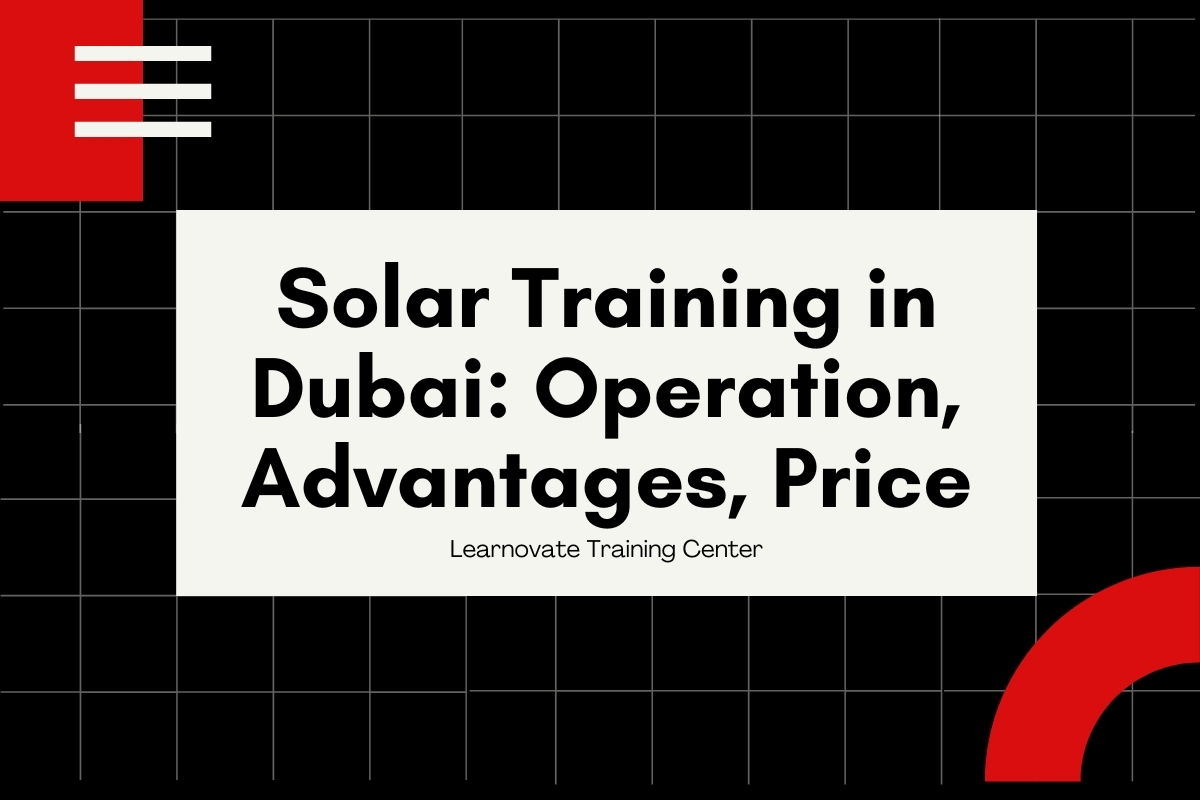Solar energy is a natural and unlimited source of energy that depends on the sun.
Sunlight captured by photovoltaic panels produces eco-responsible electricity, significantly reducing the carbon footprint. The installation of solar panels contributes to the production of green and carbon-free energy.
To know
95% of photovoltaic panel components are recyclable or reusable.
Why choose photovoltaics?
A national context favorable to the development of photovoltaics:
- Energy shortages
- Growing awareness of environmental issues: desire for frugality and autonomy
- Significant rise in energy prices and fall in the price of photovoltaic equipment
- Dubai is one of the sunniest countries in the UAE.
The installation of solar panels allows you to meet the energy needs of your home and save money.
Indeed the cost of electricity is undergoing strong increases while the cost of solar KW has been divided by 10 in 10 years. In 5 years, it will even be nearly twice as expensive as network kWh.
It is also possible to resell the surplus production to the electricity network, which makes it possible to optimize the amortization of the installation.
The installation of photovoltaic equipment also gives value to a property and facilitates its resale world
Solar Training in Dubai and around the world
Among Renewable Energies, solar still occupies a modest place but has experienced very strong growth in recent years.
In 2021, green electricity accounted for 3.7% of global electricity production.
In 2022, in France alone, it will represent more than 3% of our production. install solar panels?
The Complete Solar Panel Installation Course, Dubai
In Dubai, the legal framework requires installers to be RGE qualified in order to be able to offer your customers a photovoltaic panel installation service.
Solar training in Dubai session will enable people looking for work to acquire the necessary skills sought by professionals in the sector. Among the 90 trainees of the previous sessions held in Dubai, 80% were recruited, apprentices.
The session lasts 400 hours, i.e. 3 months at the rate of 35 hours per week. This is made up of four modules: cover, frame, electricity, and photovoltaic. Beyond the theoretical aspect, an apprenticeship on the ground is integrated into the training with a 70-hour internship in immersion with an installer in the region, which can lead to employment.
The advantages of solar training in Dubai
Regardless of the type of panels used, solar energy has many advantages:
- It is free and inexhaustible energy: the only expenses related to the purchase of the material composing the installation. It is also inexhaustible: the sun is unlikely to go out for five billion years, so you have plenty of time to take advantage of its rays to produce electricity and heat for your home.
- It is green energy: ideal in the context of the energy transition, solar energy does not emit greenhouse gases or carbon dioxide. As a bonus, photovoltaic panels are mostly made of recyclable materials.
- A solution to be autonomous: thanks to solar, you can also strive for energy autonomy. However, you will need to invest in batteries that will store the solar energy not consumed immediately, and redistribute it when necessary.
- Solar is economical energy: the cost of installing and maintaining photovoltaic panels tends to drop, which significantly reduces your initial investment. Thanks to solar, you save on your consumption and can even generate income by reselling the electricity produced.
How do photovoltaic solar panels work?
There are two types of solar energy:
- Thermal solar energy: captured via thermal solar panels, it heats a fluid that will supply a central heating circuit and/or produce domestic hot water.
- Photovoltaic solar energy: it makes it possible to produce electricity, thanks to photovoltaic solar panels. It is then used in different ways, by households or in the context of industrial activities, for example, for lighting, heating, powering various devices, etc.
Note that there are also hybrid solar panels, ensuring the production of both thermal and electrical energy.
This equipment captures the energy from the sun’s rays and transforms it into electricity. This energy is captured by rectangular modules, covered with cells of silicon, a semiconductor material. The main steps ensuring the transformation of solar energy into electricity are as follows:
- The photons, ie sunlight, strike the cells and transmit their energy to the electrons contained in the solar panels.
- The electrons move and then produce a direct electric current.
- Thanks to an inverter, this direct current is transformed into an alternating current, which can be used on the electrical network or in a building.
- The electricity produced in this way can either be used to power electrical appliances in the house, be sold to an electricity distributor, or be stored in a battery for later use in the house (for example at night, when it is no more sun).
The cells that line the solar panels can be:
- Mon crystalline: these are the most efficient cells, but also the most expensive.
- Polycrystalline : they offer the best value for money currently on the market. They are also the most used cells.
- Amorphous (or thin layers) : they make profitable the solar rays even when they are low, and they are cheaper to produce than mono and polycrystalline cells. However, they have a major drawback: their low yield in full sun and their notorious loss of efficiency over time.
How to choose your solar panels?
Several criteria must be taken into account when choosing your solar panels. Thus, the peak power is a reference that makes it possible to compare the power and the efficiency of the models to choose the most profitable. A power of 100 Wp (Watts peak) corresponds to the maximum power of the module, with a sunshine of 1000 W/m2 and a cell temperature of 25°C. In fact, the energy captured by the module will be less and depends on the sunshine, the season, the time of day, and the luminosity… You must also take into account the surface of the panel, its durability, and the power variation according to the outside temperatures.
The modules are usually installed on fixed supports (on the ground or on a roof), but they can also be placed on mobile systems that follow the path of the sun, thus increasing the electricity production by approximately 30% compared to a static installation. . For optimal performance, favor a south-facing orientation, with an inclination oscillating between 30 and 45°.
How much do solar panels cost?
The price of your solar panels depends on several elements, in particular their surface, their quality, their efficiency, and the material in which they are designed… According to the Ecological Transition Agency (ADEME), the price of a solar panel generally fluctuates between 2.7 and 3.7 euros excluding tax per watt-peak, a unit of measurement which allows knowing the maximum power of a panel. For the installation of 3 kW solar panels, which correspond to an average-sized installation, it is necessary to pay today between 9,000 € and 12,000 € including tax.
How to store electricity produced by solar?
Solar energy is an energy source that cannot guarantee identical performance from one day to the next. Depending on the amount of sunshine, the energy captured will not be the same. To store the electricity produced for later use, solar storage batteries must be used. Their price varies according to the technology implemented and the storage capacity. An open lead battery, the simplest technology, costs between 80 and 250 €. Lithium batteries, which are more advanced and efficient, require an investment of 600 to 1,000 €.













